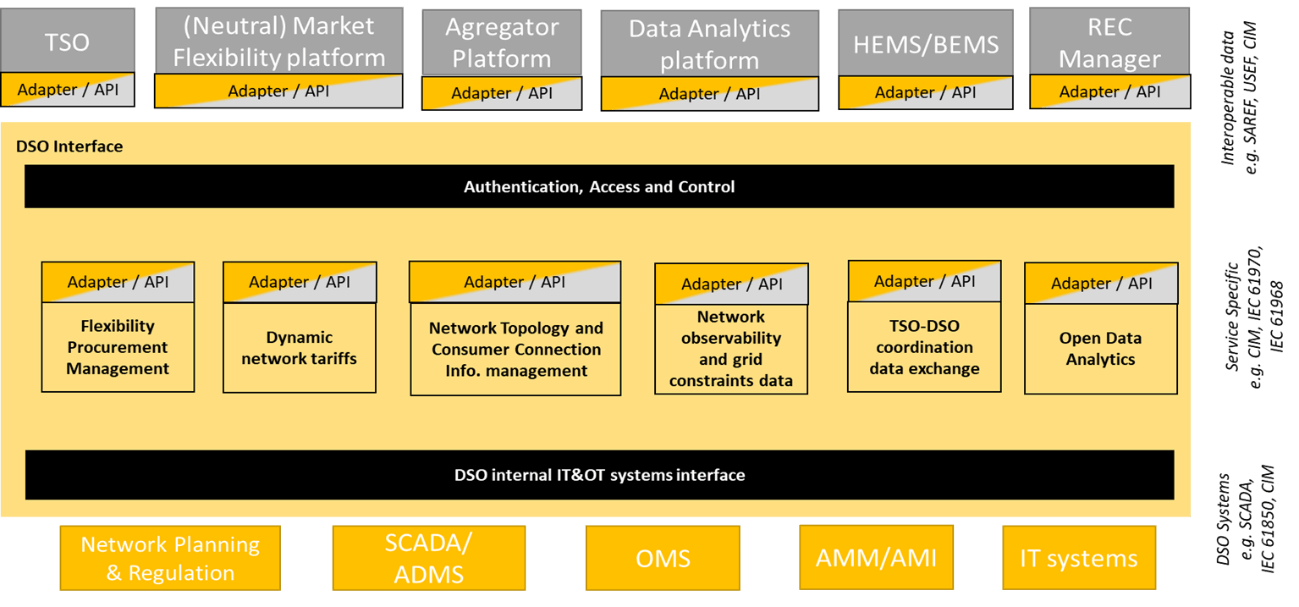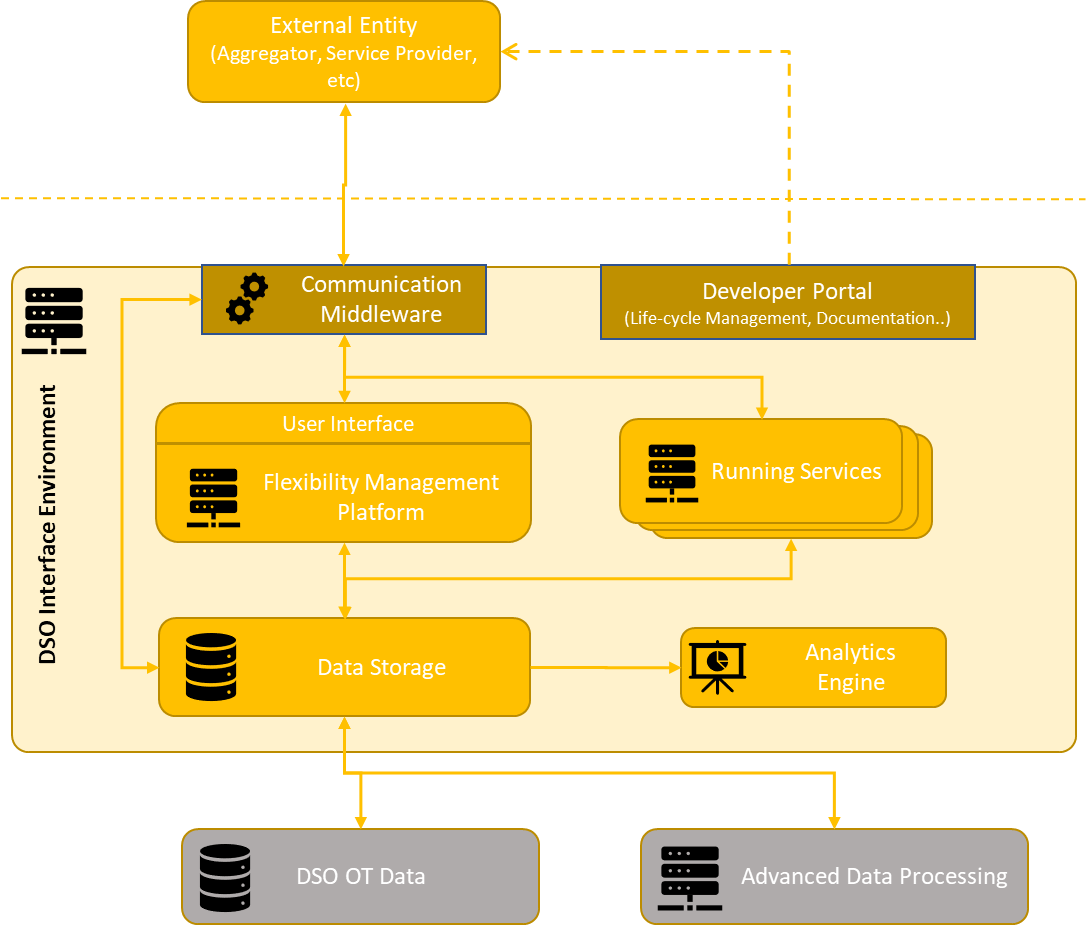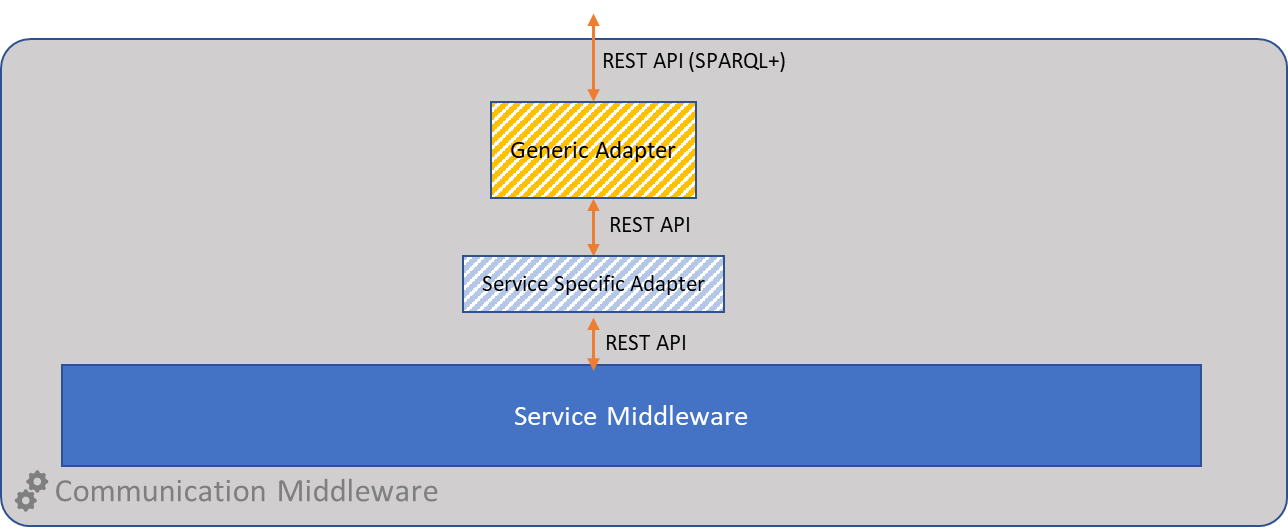DSO Standard Interface for Enabling Distributed Flexibility and Grid Services
Written by Carlos Silva, Alexandre Lucas, Francisco Silva, and José Miguel Cruz
The continuous growth of distributed renewable generation and energy storage systems, together with the expected increase in active customers engaged in demand response, poses several challenges in system operators' (SO) current planning and operational practices. A key issue to be addressed on the path to energy transition is how to incorporate the demand side flexibility services, derived from these new assets and players into the energy market, using them for operational and ancillary services, that can address different technical issues such as ensuring resilience, efficiency, and reliability for modern electrical grids.
In the context of this digital development opportunity for the DSOs, the DSO Interface emerges as a system, which brings important innovations to the future flexibility services provisioning, to the energy system infrastructure. This article presents the main concept and technical aspects of the DSO Interface, developed under the EU-funded H2020 InterConnect project, which aims to develop and demonstrate advanced solutions for the digitalisation of the electricity sector, by exploring digital technologies to guarantee interoperability within the sector. The project will demonstrate its interoperable solution, in 7 pilots across Europe, facilitating interoperability across the energy domain, encompassing the flexibility services provision and improvement to grid operation.
The Interface
The DSO Interface will serve as a gateway, between the DSO and external agents and will act as one solution, which will support multiple scenarios, interactions, and stakeholders for the purpose of flexibility management, data sharing, and enhanced network observability.

Figure 1 - DSO Interface building blocks (InterConnect 2021)
As seen in Figure 1, most of the legacy DSO systems are developed bearing in mind a specific key purpose. Hence, these legacy systems, traditionally, haven’t been designed to share information among them and with other systems. With the increased diversity of systems available for the DSO to manage the grid, DSOs will have to reconsider the design of their software architectures, to facilitate information sharing, recurring to microservices architectures and REST APIs. The DSOs are working hard and proactively to cope with the fast transformations taking place. These systems will, hence, need to become more dynamic, meaning that they should be more flexible, modular, and interoperable.
Furthermore, as this system contains transversal components, which are reusable across the multiple adopted services, the DSO interface has also the potential to encompass other DSO’s solutions in its architecture. Additional systems can be seen as one added module of the DSO interface. Enabling these interactions and modularity, is the interoperability work performed in the project, based on the SAREF (ETSI 2021) - Smart Applications REFerence - ontology extension, with which the DSO interface complies with.
Supported Services
The main services which will be developed and tested within InterConnect project and its demonstrations, within the electrical grid context, will be the following:
Flexibility
For the day-ahead and intraday operation in the DSO networks, the DSO Interface will provide a module, shown in Figure 2, to enable bilateral flexibility mobilisation and provisioning to perform activation for local and regional congestion management and voltage control. This source of flexibility can be located both at the MV (commercial supermarkets) and LV (residential appliances).

Figure 2 - DSO Interface Architecture (InterConnect 2021)
Data Sharing
To enable the flexibility mechanisms and the provision of energy services by third party entities, the DSO creates the mechanisms capable of providing the needed information for the emergence of these services to the stakeholders, while maintaining and ensuring at the same time compliance with GDPR and the protection of business information.
Enhanced Observability
The service will leverage on the Home Energy Management Systems (HEMS) and monitoring devices, enabling the DSO to have a harmonised approach, to access data from the costumer side for network operations including fault detection identification. This will change the way, and increase the frequency, of how outages on the low voltage grids are detected and observed. By retrieving available data from distributed household smart appliances (through a HEMS) such as washing machines, dishwashers, or even water heaters, the grid operators will be served with enhanced observability services able to detect faults, which can then be troubleshoot, with their own metering infrastructure and dispatch field crews, in response to these alarms. This will increase the quality of service and ultimately help reduce outage durations.
Technical Implementation
The DSO Interface architecture will enable the integration and connection of OT (Operational Technology) legacy systems and the different stakeholders such as aggregators, service providers, retailers, and ultimately with consumers. This interface will consider thus, an outbound interface using both REST API interfaces and the InterConnect Interoperability Framework (InterConnect 2021) and an inbound one for these legacy systems, providing the necessary flow of information and enabling for example the definition of flexibility needs by achieving a seamlessly integration with the grid planning systems.
A key point of the implementation of this architecture is deeply linked with the Communication Middleware (Figure 3), that enables interoperable data exchange through the previously mentioned Interoperability Framework (IF), a core component being developed with the InterConnect project to enable semantic interoperability by using the SAREF ontology.
The connection to the IF is accomplished with the development of a Service Specific Adapter, which is a software component which allow for the translation between legacy data models, such as defined typical JSON over REST API, into SAREF semantic triplets. This service specific adapter will then interact with the IC Generic Adapter (entry point to the IF) to allow for the communication with multiple stakeholders with a common semantic understanding.

Figure 3 - DSO Interface Communication Middleware (InterConnect 2021)
This interface cannot be developed without a proper field test, being so, testing will be conducted in the project demonstrations, where this solution will be deployed within cloud services. After that, it will be used in real demonstration scenarios, for instance, within the Portuguese pilot, in which the participation of 300 household customers is foreseen through dedicated provisioning and installations of smart appliances such as washing machines, dryers, dishwashers, heat pumps, and water heater controllers.
References
- ETSI. 2021. SAREF Portal. https://saref.etsi.org/.
- H2020 InterConnect. 2019. https://interconnectproject.eu/.
- InterConnect. 2021. “D2.3 - Interoperable and secure standards and ontologies.” https://interconnectproject.eu/wp-content/uploads/2022/03/D2.3-Interoperable-and-secure-standards-and-ontologies_v1.0_final_clean.pdf.
- InterConnect. 2021. “D4.1 - Functional Specification of DSO Standard Interface Application.”
- InterConnect. 2021. “D4.2 Technical Specification of DSO Interface.”
This article was edited by Jorge Luis Angarita.
To view all articles in this issue, please go to May 2022 eBulletin. For a downloadable copy, please visit the IEEE Smart Grid Resource Center.




To have the Bulletin delivered monthly to your inbox, join the IEEE Smart Grid Community.
Past Issues
To view archived articles, and issues, which deliver rich insight into the forces shaping the future of the smart grid. Older Bulletins (formerly eNewsletter) can be found here. To download full issues, visit the publications section of the IEEE Smart Grid Resource Center.




